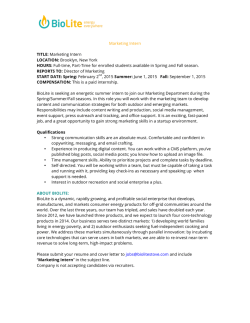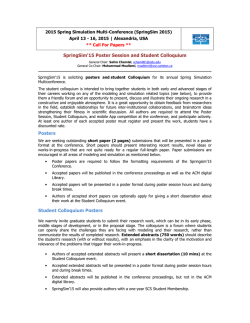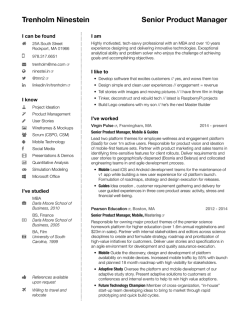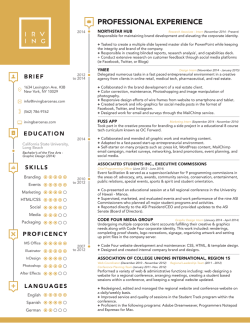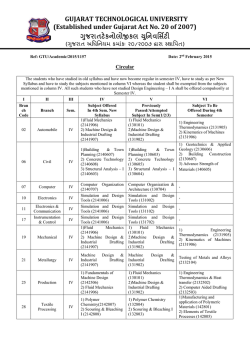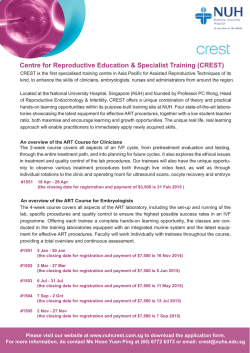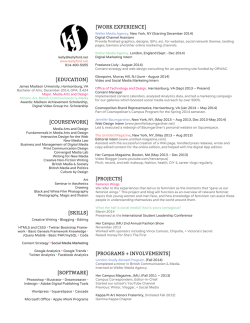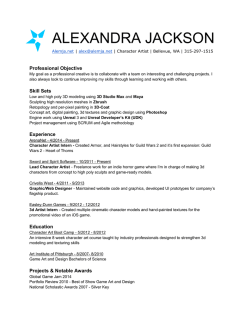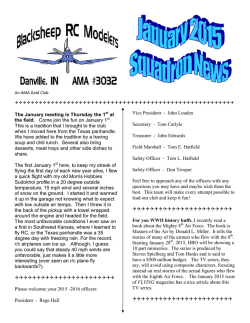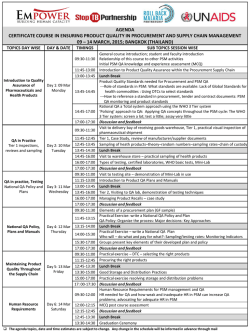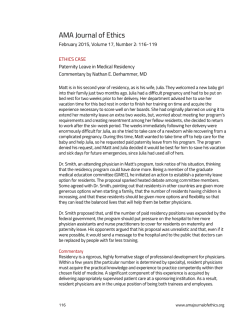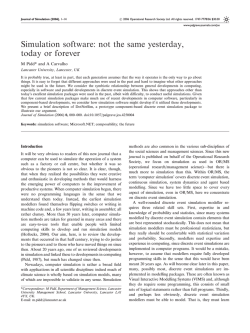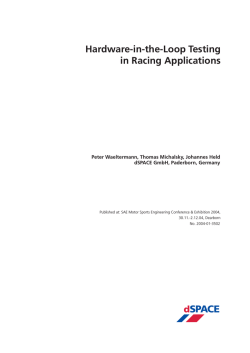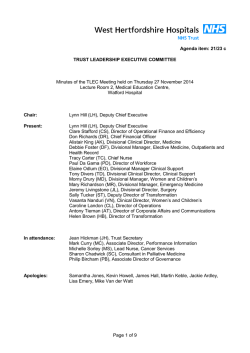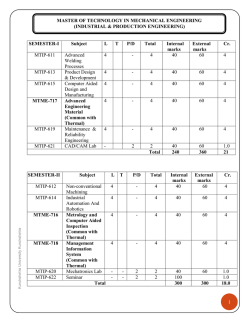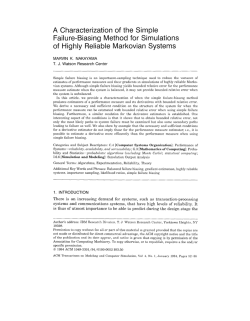
Communication Skills Training in the Twenty
AMA Journal of Ethics February 2015, Volume 17, Number 2: 138-141 MEDICAL EDUCATION Communication Skills Training in the Twenty-First Century Thomas W. LeBlanc, MD, MA I did my first paracentesis as a medical student. My patient had cirrhosis of the liver, which led to “ascites” (the medical term for a massive fluid buildup in the abdomen). He appeared about nine months pregnant, and his tense, distended belly caused him much difficulty breathing. He pleaded for relief, so the medical resident offered him paracentesis, i.e., a fluid removal procedure. As we left the patient’s room the intern proudly proclaimed, “You’re going to do this one,” with a smile and a nod of confidence in my direction. I felt much less confidence in myself than he seemed to have in me. What if I punctured the bowel? What if I hit a blood vessel? Catastrophic thoughts consumed me. So I tried to “psych myself up” for my first paracentesis; surely this was an important rite of passage. And why worry? After all, I had seen a paracentesis once before, just the week prior; it seemed simple enough: just insert the needle into the fluid pocket and drain as much fluid as possible. And the intern would be right there, supervising me. She had done at least four or five of these procedures before, and we could page the resident if we ran into trouble. What could go wrong? Thankfully, nothing did, and after I removed about five liters of fluid from my patient’s abdomen he smiled and thanked us, finally able to speak without the staccato of a person whose lungs cannot fully expand. Still, I couldn’t help but feel that I had dodged a bullet, or perhaps had enjoyed some beginner’s luck. I wondered, was this really an appropriate way to learn? Should I really have been doing this for the first time on a real patient? Stories like this are hardly unusual among medical trainees. “See one, do one, teach one” is the old adage of medical education. Having trained in the “see one, do one, teach one” culture, I can certainly appreciate its benefits. In many ways, it works; after all, much of medical training is an apprenticeship. Like the aspiring blacksmith who learns his new craft by watching a master at work, medical trainees do most of their learning contextually. It’s a highly effective educational approach. Provided there are sufficient protections in place, it can be safe and reasonable to learn in this way. Reflecting on my own experiences, I have always learned so much more from caring for a patient than from reading a textbook. More philosophically speaking, there will be a “first time” for each and every one of us to do a procedure. As simulation technology becomes increasingly sophisticated and available, however, one has to question the appropriateness of doing a procedure for the first time on a real patient. As a medical student in the early 2000s, we practiced physical examination maneuvers on each other first; we even learned to draw blood from each other’s veins before anyone let us near a real patient, because simulation technology was 138 www.amajournalofethics.org not yet ready for prime time. Now there are central line insertion simulators and anesthesia simulators. We can practice doing airway intubations on test dummies and run mock “code blue” scenarios with realistic equipment that responds much as a patient might. These simulators allow trainees to practice the mechanics of a procedure or scenario outside the pressurized environment in which patients’ lives are at stake. Building this “muscle memory” can serve us, and our patients, well—practice does, indeed, make perfect. Most people will therefore agree that trainees should practice using simulators first, before doing a risky procedure in real life on a real patient. This is hardly a controversial idea, and medical school curricula increasingly incorporate various types of simulation into their training [1, 2]. Allow me, then, to be a bit more controversial: I contend that we should take this logic a step further, and extend it to the ways in which we communicate and interact with patients. After all, harm can come from words, too, or from body language, not just from the tip of an errantly placed needle or a mishandled scalpel. Simulation isn’t just for procedures anymore; patient-doctor encounters can be simulated too. A growing body of literature demonstrates that communication behaviors are measurable, teachable, modifiable, and associated with important patient-centered outcomes [3-9]. Yet many students and trainees begin talking with patients without much instruction or practice. Unfortunately, trainees often assume they already know how to communicate. After all, we spend most of our lives doing it. But medical communication is different; there is often much at stake, emotions are involved, and the asymmetry of information can be enormous. If you don’t believe me, think about the last time your car needed a major repair and recall the confusion, frustration, uncertainty, and other emotions that probably made this a difficult experience. A new solenoid—what is it and why do I need one? Will my car blow up without it? When I give lectures on this topic, there are always skeptics. Some complain about how simulated communication exercises take valuable time away from “real” medical education. Others criticize the examples, possibly to deflect the focus from the discomfort the subject matter causes them. Still others say this content cannot be taught and should be learned slowly, through experience. Yet, when trainees take their place in the “hot seat” before a standardized patient, most of them really struggle. Then something magical happens: we see them improve with practice. The evidence is clear; communication techniques make a difference, and they can be taught and learned. For example, short training courses are shown to improve the quality of medical residents’ end-of-life discussions with patients [9] and improve oncologists’ attention to important psychosocial issues in the clinic [5]. Much of the recent success of palliative care as a subspecialty, one can argue, stems from its focus on high-quality communication. So many of us really value expert communicators because we feel unskilled ourselves and are sometimes unprepared when faced with communication-related challenges. When you really “get stuck” in a tough situation with a patient or family, you call colleagues in palliative care to help talk everyone through it. These skills and practices are absolutely invaluable. So why aren’t we doing more to explicitly teach and measure them? AMA Journal of Ethics, February 2015 139 Granted, simulation of patient-centered communication can be difficult and costly and necessitates quite a bit of time and expertise. It often requires paying standardized patients to play roles and investing in their training. It requires interest and commitment from both educators and students. However, as several prominent examples show, it is possible and its rewards can be great. OncoTalk [10], an NIH-funded initiative to teach oncology trainees better communication skills, has spawned a number of offshoots for geriatrics, nephrology, and critical care settings, among others, including its newest cousin, Vital Talk, which offers communication and faculty training courses for clinicians [11]. Don’t our patients deserve not to be the proverbial “guinea pigs”? Would we not scoff at sending a student to the wards without understanding anatomy and physiology? Similarly, no trainee should have to give bad news to a patient without having practiced it repeatedly in simulation, studied principles of high-quality patient-centered communication, and been evaluated on his or her performance. But don’t take my word for it; in its visionary 2014 report Dying in America, the Institute of Medicine calls for structured assessment of communication quality as part of physician licensing and continuing medical education [12]. This would be an important step toward elevating the quality and consistency of patient-centered care in the United States. Perhaps this is a signal that the future is getting brighter for the teaching of patientcentered communication skills. And perhaps, in light of new teaching techniques, the old adage requires a bit of modification: “See one, try one, and if you mess it up—don’t worry, it’s just a simulation.” References 1. Scalese RJ, Obeso VT, Issenberg SB. Simulation technology for skills training and competency assessment in medical education. J Gen Intern Med. 2008;23(1)(suppl):46-49. 2. Issenberg SB, McGaghie WC, Hart IR, et al. Simulation technology for health care professional skills training and assessment. JAMA. 1999;282(9):861-866. 3. Roter DL, Hall JA, Kern DE, Barker LR, Cole KA, Roca RP. Improving physicians’ interviewing skills and reducing patients’ emotional distress. A randomized clinical trial. Arch Intern Med. 1995;155(17):1877-1884. 4. Langewitz WA, Eich P, Kiss A, Wössmer B. Improving communication skills—a randomized controlled behaviorally oriented intervention study for residents in internal medicine. Psychosom Med. 1998;60(3):268-276. 5. Jenkins V, Fallowfield L. Can communication skills training alter physicians’ beliefs and behavior in clinics? J Clin Oncol. 2002;20(3):765-769. 6. Fallowfield L, Jenkins V, Farewell V, Saul J, Duffy A, Eves R. Efficacy of a Cancer Research UK communication skills training model for oncologists: a randomised controlled trial. Lancet. 2002;359(9307):650-656. 7. Maguire P, Pitceathly C. Key communication skills and how to acquire them. BMJ. 2002;325(7366):697-700. 8. Roter DL, Larson S, Shinitzky H, et al. Use of an innovative video feedback technique to enhance communication skills training. Med Educ. 2004;38(2):145157. 140 www.amajournalofethics.org 9. Alexander SC, Keitz SA, Sloane R, Tulsky JA. A controlled trial of a short course to improve residents’ communication with patients at the end of life. Acad Med. 2006;81(11):1008-1012. 10. Oncotalk website. http://www.oncotalk.info. Accessed December 18, 2014. 11. VitalTalk website. http://www.vitaltalk.org. Accessed December 18, 2014. 12. Institute of Medicine Committee on Approaching Death. Dying in America: Improving Quality and Honoring Individual Preferences Near the End of Life. Washington, DC: National Academies Press; 2014. http://books.nap.edu/openbook.php?record_id=18748. Accessed December 18, 2014. Thomas W. LeBlanc, MD, MA, is an assistant professor of medicine in the Division of Hematologic Malignancies and Cellular Therapy and a faculty associate in the Trent Center for Bioethics, Humanities and History of Medicine at the Duke University School of Medicine in Durham, North Carolina. He is a practicing oncologist and board-certified palliative care physician. His research explores symptom burden, quality of life, distress, and decision making in patients with cancers of the blood. Related in AMA Journal of Ethics Professionalism and Appropriate Expression of Empathy When Breaking Bad News, February 2015 Student Role in Discussion of Diagnosis with Patients, December 2003 The Flipped Classroom Paradigm for Teaching Palliative Care Skills, December 2013 Serious Illness Communications Checklist, December 2013 Taking Your Communication Skills to the Next Level, September 2006 The viewpoints expressed in this article are those of the author(s) and do not necessarily reflect the views and policies of the AMA. Copyright 2015 American Medical Association. All rights reserved. ISSN 2376-6980 AMA Journal of Ethics, February 2015 141
© Copyright 2026
